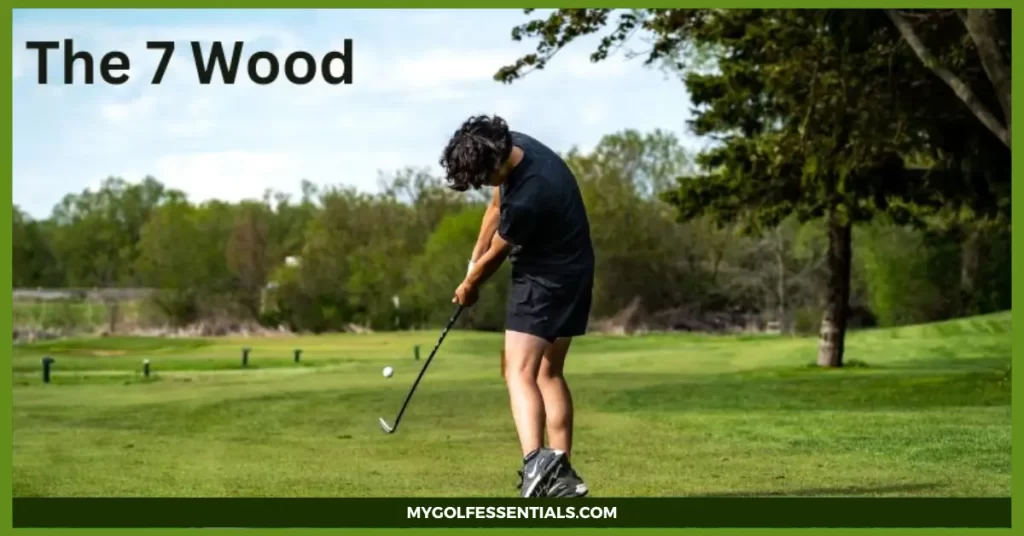
Fairway woods can be game-changers on the course, offering power, versatility, and precision when used correctly. Yet, many golfers struggle to hit them with confidence, often leaving strokes behind. Whether you’re aiming for that perfect second shot or navigating a tricky lie, mastering your fairway woods is key to improving your game.
In this guide, we’ll break down everything you need to know to hit Fairway Woods like a pro in 2025. Therefore, we invite you to read on to sharpen your skills and gain the edge you need to dominate the fairways.
Without further ado, let’s get started…
What Are Fairway Woods?
Fairway woods are versatile golf clubs designed for long-distance shots, typically used from the fairway but equally effective off the tee or in challenging lies. They feature a larger clubhead and longer shaft compared to irons, enabling greater distance and forgiveness.
Furthermore, Fairway woods are essential for golfers seeking power and precision in their mid-to-long game.
Differences Between Fairway Woods and Other Clubs
Fairway woods differ from drivers and irons in several key ways:
- Drivers: Designed for maximum distance off the tee, drivers have the largest clubheads and lowest lofts, making them less suitable for fairway use.
- Irons: With smaller clubheads and higher lofts, irons are ideal for precision and control, but they lack the distance capabilities of fairway woods.
- Fairway Woods: Striking a balance between drivers and irons, fairway woods offer a blend of distance and versatility, making them effective for a wide range of shots.
Types of Fairway Woods
Fairway woods come in various types, distinguished by their lofts and intended use. The most common types include:
- 3-Wood: With a loft around 15°, the 3-wood provides maximum distance and is often used for long shots off the fairway or tee.
- 5-Wood: Typically lofted around 18°, the 5-wood offers a balance of distance and height, making it suitable for a variety of lies.
- 7-Wood: Featuring a loft around 21°, the 7-wood is perfect for higher, softer landings, making it an excellent choice for approach shots or difficult roughs.
Benefits of Each Type for Different Situations
- 3-Wood: Ideal for long par-5 holes or tight tee shots where accuracy is crucial.
- 5-Wood: A great all-purpose club for mid-range shots, offering a mix of distance and control.
- 7-Wood: Perfect for hitting high, soft-landing shots, especially from tricky lies or when precision is key.
By understanding the unique characteristics and benefits of Fairway Woods, you can confidently select the right club for any situation, elevating your performance on the course.
How to Set Up Properly for Hitting Fairway Woods
Proper setup is the foundation for hitting fairway woods effectively. It ensures a solid connection and maximizes both distance and accuracy. Here’s how to get it right:
Stance and Grip
- Stance Width and Foot Positioning: Set your feet slightly wider than shoulder-width apart to maintain balance and stability during your swing. Position your lead foot slightly open while keeping your trail foot square for optimal weight transfer.
- Grip Pressure and Hand Placement: Maintain a relaxed yet firm grip. If it’s too tight, you’ll restrict your swing fluidity. On the other hand, if it’s too loose, you’ll lose control. Thus, position your hands so the V-shapes formed by your thumbs and index fingers point toward your trailing shoulder.
Ball Positioning
Position the ball slightly forward in your stance, roughly two inches inside your front heel. This setup allows the clubface to sweep the ball off the ground rather than hitting down on it, which is critical for fairway woods.
For a 3-wood, you may position the ball a touch closer to the center compared to a 5- or 7-wood to ensure a clean strike.
Common Mistakes Related to Ball Positioning:
- Too Far Forward: Leads to thin shots or topping the ball, as the club may strike too high on the ball.
- Too Far Back: Results in steep angles of attack, often causing the club to dig into the turf or hit behind the ball.
Mastering these setup fundamentals will give you a solid base for hitting fairway woods effectively, increasing your consistency and confidence on the course.
Swing Mechanics for Fairway Woods
Mastering the swing mechanics for fairway woods is crucial for achieving consistent distance, accuracy, and control. Let’s break it down into three critical phases: the backswing, downswing, and follow-through.
The Backswing
A solid backswing lays the foundation for a successful shot.
Key Elements of a Successful Backswing:
- Maintain a steady tempo to set up a controlled downswing.
- Keep your arms extended and wrists relaxed to create a wide arc.
- Rotate your shoulders fully, allowing your back to face the target for maximum power.
Tips for Maintaining Balance and Control:
- Distribute your weight evenly on both feet, avoiding excess sway.
- Focus on keeping your head still and your eyes on the ball.
- Avoid overextending your swing, which can disrupt timing and control.
The Downswing
A smooth, controlled downswing is essential for striking the ball cleanly.
Importance of a Smooth Transition:
- Avoid rushing from the top of your backswing, as it can lead to misalignment.
- Let the club naturally drop into position rather than forcing it.
Focus on Body Weight Distribution:
- Shift your weight from your back foot to your front foot as you swing.
- Engage your hips and torso to generate power while keeping your lower body stable.
- Ensure your hands lead the clubhead through impact for better control.
Follow-through
The follow-through is often overlooked, but it plays a significant role in both distance and accuracy.
Role of Follow-through:
- A proper follow-through ensures energy transfer and balance throughout the swing.
- It also indicates a smooth swing path, which is critical for accuracy.
Tips for Finishing the Swing Correctly:
- Let your chest face the target, with your weight fully shifted onto your front foot.
- Hold your finish position briefly to assess balance and swing quality.
- Keep your arms extended and relaxed, allowing the club to complete its natural arc.
By focusing on these three phases and practicing consistently, you can refine your swing mechanics and unlock the full potential of your fairway woods.
Common Mistakes to Avoid
When using fairway woods, even small errors can lead to missed opportunities on the course. Here are some of the most common mistakes golfers make and how to avoid them:
Topping the Ball
This occurs when the clubface makes contact with the top of the ball, resulting in a weak, low shot.
Causes:
- Lifting your head too early to watch the ball’s flight.
- Swinging with an overly steep angle of attack.
How to Avoid:
- Keep your eyes focused on the back of the ball throughout the swing.
- Ensure the clubhead sweeps the ball off the turf rather than chopping at it.
- Use a shallow swing path, with the ball positioned slightly forward in your stance.
Fat Shots
A fat shot happens when the club strikes the ground before hitting the ball, causing a loss of power and accuracy.
Causes:
- Poor weight transfer during the swing.
- Excessive tension in the arms or grip.
How to Avoid:
- Shift your weight smoothly from your back foot to your front foot during the downswing.
- Relax your grip to maintain fluidity in your swing.
- Focus on brushing the turf lightly after contact rather than digging into it.
Inconsistent Contact
Inconsistent strikes lead to erratic ball flights and missed targets.
Causes:
- Improper setup or alignment.
- Inconsistent tempo or rushed swings.
How to Avoid:
- Double-check your setup, ensuring proper ball position and body alignment.
- Practice maintaining a steady tempo throughout your swing.
- Focus on making clean contact with the ball by visualizing the swing path and follow-through.
By recognizing these common mistakes and incorporating the corrective tips into your practice routine, you can significantly improve your consistency and confidence with Fairway Woods.
Drills for Improvement
Improving your fairway wood shots requires consistent practice and targeted drills. Here are two effective methods to help refine your technique and build confidence.
Extension Drill
The extension drill focuses on maintaining a wide and controlled swing arc, essential for hitting clean, powerful fairway wood shots.
Step-by-Step Instructions:
- Setup: Place a golf tee about six inches in front of your ball along your intended target line.
- Take Your Stance: Address the ball as you normally would, ensuring proper alignment and ball position slightly forward in your stance.
- Swing: As you swing, focus on extending your arms through impact, aiming to brush the turf and “strike” the forward tee.
- Evaluate: If your club passes cleanly over the forward tee, it indicates proper extension and swing path.
Benefits:
- Encourages a smooth, sweeping motion.
- Promotes better ball striking and follow-through.
- Helps eliminate topping and fat shots.
Swing Thought Techniques
Mental focus is just as important as physical mechanics when it comes to consistent fairway wood performance.
Simple Mental Cues to Enhance Focus:
- “Brush the Grass”: Visualize your club gently brushing the grass during impact to ensure a shallow, sweeping swing.
- “Shift and Swing”: Remind yourself to shift your weight forward before swinging through the ball.
- “Eyes on Target”: After setting your stance, visualize the target line and maintain focus on where you want the ball to go.
- “Smooth and Steady”: Repeat this phrase to maintain a consistent tempo, avoiding rushed or jerky motions.
Benefits:
- Helps reduce overthinking and tension during swings.
- Encourages fluid, confident movements.
- Enhances focus on key aspects of your swing mechanics.
Incorporating these drills into your practice routine can significantly improve your fairway wood performance, helping you achieve cleaner strikes and greater consistency.
Final Thoughts
Mastering fairway woods is an essential skill for every golfer aiming to elevate their game in 2025. By understanding the unique features of these clubs, refining your swing mechanics, and practicing effective drills, you can gain greater control over your shots and boost your overall performance.
Remember, the key to hitting fairway woods with confidence lies in mastering your setup, avoiding common mistakes, and maintaining a smooth, consistent swing. With the right approach and a commitment to practice, you’ll be well on your way to adding distance, precision, and versatility to your game.
Keep these tips in mind, and watch your fairway wood performance improve with every round.
Key Takeaways
- Designed for long-distance shots, fairway woods offer a balance of power and precision, making them ideal for various situations on the course.
- Common options include the 3-wood (15° loft), 5-wood (18° loft), and 7-wood (21° loft), each suited for different types of shots and course conditions.
- A solid stance with the ball positioned slightly forward in your stance and a relaxed yet firm grip are essential for hitting fairway woods effectively.
- The backswing, downswing, and follow-through are key phases for a successful fairway wood shot. Balance and smooth transitions are critical.
- Topping the ball, fat shots, and inconsistent contact can be avoided by focusing on a steady tempo, correct ball positioning, and weight transfer.
- A proper follow-through ensures energy transfer, balance, and accuracy, and it also indicates whether your swing path is correct.
- Simple mental cues, such as “brush the grass” and “eyes on target,” can improve your focus and help maintain a steady, confident swing.
- The extension drill and swing thought techniques are effective for refining your swing mechanics, promoting smoother swings and cleaner ball striking.
- Select the appropriate club based on loft and intended shot(3-woods for long distances, 5-woods for balanced control, and 7-woods for higher, softer landings).
- Regular practice, focusing on setup, swing mechanics, and common mistakes, will lead to improved consistency and confidence with your fairway woods.
FAQs
How do I choose the right fairway wood?
Selecting the right fairway wood depends on your playing style, swing speed, and the specific situations you encounter on the course. Consider factors such as loft, head design, and whether you prefer a larger clubhead.
What are the differences between a fairway wood and a hybrid?
Fairway woods typically have larger heads and are designed for sweeping swings, while hybrids are easier to hit with a descending blow like an iron. Hybrids may provide higher launch angles and spin rates.
How do I know which loft of fairway wood to use?
The loft you choose should complement your existing clubs, filling gaps in distance between your driver and irons. A common approach is to maintain loft gaps of no more than five degrees between clubs.
Can beginners effectively use fairway woods?
Yes, many beginners find fairway woods easier to hit than long irons due to their larger clubhead and forgiving design, making them suitable for various skill levels.
What should I focus on during my follow-through?
A good follow-through is crucial for distance and accuracy; ensure that you finish with your weight on your front foot and your body facing the target.



